In a scenario where vertices are displaced in the vertex shader, how to retrieve their transformed positions in WebGL / Three.js?
Other questions here suggest to write the positions to a texture and then read the pixels, but the resulting value don't seem to be correct.
In the example below the position is passed to the fragment shader without any transformations:
// vertex shader
varying vec4 vOut;
void main() {
gl_Position = vec4(position, 1.0);
vOut = vec4(position, 1.0);
}
// fragment shader
varying vec4 vOut;
void main() {
gl_FragColor = vOut;
}
Then reading the output texture, I would expect pixel[0].r to be identical to positions[0].x, but that is not the case.
Here is a jsfiddle showing the problem: https://jsfiddle.net/brunoimbrizi/m0z8v25d/2/
What am I missing?
